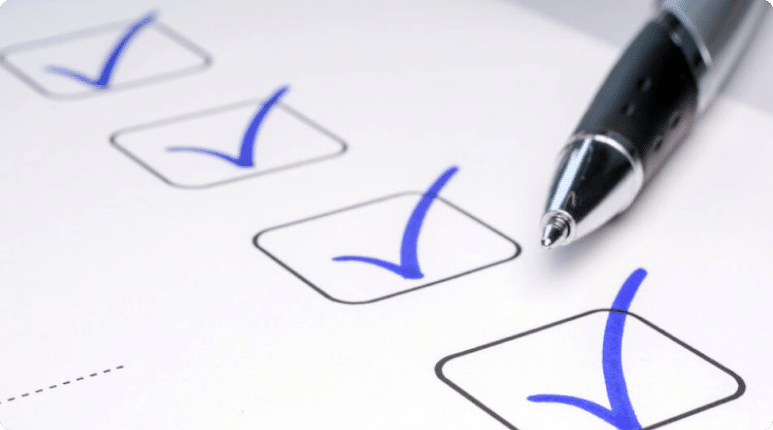Renting a property is a significant decision that involves finding a place that suits your needs and preferences. Before signing the lease agreement, conducting a thorough rental inspection is crucial to ensure that the property meets your standards. In this guide, we’ll explore what rental inspection entails, why it’s important, and provide a comprehensive checklist to assist you in evaluating potential rental properties.
What is Rental Inspection and Why is it Important?
A rental inspection involves thoroughly assessing a property to identify any existing damages or issues before moving in. This process is essential for both tenants and landlords as it helps establish the condition of the property and prevents disputes regarding damages at the end of the tenancy. Rental inspections also provide tenants with an opportunity to address any concerns with the landlord before committing to the lease agreement, ensuring a smooth transition into their new home.
A rental inspection holds profound importance for tenants and landlords, serving as a critical step in renting.
For Tenants:

Protecting Tenant Rights: Conducting a thorough rental inspection empowers tenants to identify and document any existing damages or maintenance issues in the property before moving in. This proactive approach helps protect tenants’ rights by establishing the property’s condition at the beginning of the tenancy, reducing the risk of disputes or disagreements over damages later on.
Ensuring Safety and Comfort: By inspecting the property for safety hazards, such as faulty electrical wiring, plumbing leaks, or structural defects, tenants can ensure their safety and well-being. Identifying and addressing these issues early on contributes to a safer and more comfortable living environment.
Building Trust with Landlords: Engaging in a rental inspection demonstrates tenants’ responsibility and commitment to maintaining the property. This proactive approach fosters trust and transparency in the landlord-tenant relationship, laying the foundation for effective communication and cooperation throughout the tenancy.
For Landlords:
Protecting Property Investments: Rental inspections enable landlords to assess the condition of their properties and identify any maintenance needs or safety concerns. Addressing these issues promptly helps protect the landlord’s investment by preserving the property’s value and minimizing the risk of costly repairs or damages in the future.
Reducing Liability: By conducting rental inspections and addressing any safety hazards or maintenance issues, landlords can mitigate their liability and ensure compliance with housing regulations and safety standards. Proactively addressing potential risks helps protect landlords from legal liabilities and ensures a safe living environment for tenants.
Enhancing Tenant Satisfaction: A well-maintained and safe rental property contributes to tenant satisfaction and retention. By addressing any concerns identified during the inspection and maintaining the property in good condition, landlords can enhance tenant satisfaction, reduce turnover rates, and foster positive relationships with their tenants.
Rental Inspection Checklist:
Exterior Inspection:
- Check the condition of the exterior walls, roof, windows, and doors for any signs of damage or wear.
- Inspect the landscaping, including the lawn, trees, and shrubs, and note any maintenance needs.
Interior Inspection:
- Assess the condition of the walls, ceilings, and floors for cracks, stains, or water damage.
- Test all light fixtures, switches, and outlets to ensure they are in working order.
- Inspect the plumbing fixtures, including faucets, sinks, toilets, and showers, for leaks or signs of damage.
- Check the HVAC system to ensure it is functioning properly and has been recently serviced.
- Test all appliances, including the stove, refrigerator, dishwasher, and washer/dryer, to confirm they are in good working condition.
Safety Features:
- Confirm the presence of smoke detectors and carbon monoxide detectors in all required areas.
- Check the condition of fire extinguishers and ensure they are easily accessible.
- Test all locks on doors and windows to ensure they provide adequate security.
Utilities and Amenities:
- Verify that all utilities, including water, electricity, and gas, are functioning properly.
- Test the water pressure and temperature in sinks, showers, and bathtubs.
- Check for adequate lighting in all rooms and common areas.
- Inspect any included amenities, such as swimming pools, gyms, or parking spaces, to ensure they meet your expectations.
Documentation:
- Take detailed notes and photographs of any existing damages or issues discovered during the inspection.
- Document the condition of the property using a rental inspection checklist provided by the landlord or property management.
Conclusion:
A thorough rental inspection is essential for ensuring that your new home meets your needs and expectations. By carefully assessing the property’s condition and documenting any existing damages or issues, you can avoid potential disputes with the landlord and enjoy a smooth transition into your new rental. As you embark on your rental journey, consider Zingo Smart Stay as your trusted partner in finding the perfect rental property. With a diverse portfolio of properties and exceptional customer service, Zingo Smart Stay is committed to helping you find your ideal home.


